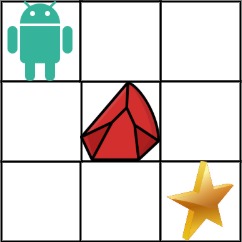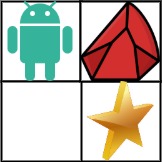7.Unique Paths
A robot is located at the top-left corner of a m x n grid (marked 'Start' in the diagram below).
The robot can only move either down or right at any point in time. The robot is trying to reach the bottom-right corner of the grid (marked 'Finish' in the diagram below).

Input: m = 3, n = 7
Output: 28
Example 2:
Input: m = 3, n = 2
Output: 3
Explanation:
From the top-left corner, there are a total of 3 ways to reach the bottom-right corner:
1. Right -> Down -> Down
2. Down -> Down -> Right
3. Down -> Right -> Down
Example 3:
Input: m = 7, n = 3
Output: 28
Example 4:
Input: m = 3, n = 3
Output: 6Solution : (Using DP)
Approach: For 1st row and column there is only 1 possible path For Other, it is sum of left and top

Time Complexity: O(MN) , Space Complexity: O(MN)
Unique Paths II
A robot is located at the top-left corner of a m x n grid (marked 'Start' in the diagram below). The robot can only move either down or right at any point in time. The robot is trying to reach the bottom-right corner of the grid (marked 'Finish' in the diagram below).
Example 1:
Example 2:
Now consider if some obstacles are added to the grids. How many unique paths would there be?
Solution:
Time Complexity: O(MN) , Space Complexity: O(MN)
Last updated
Was this helpful?